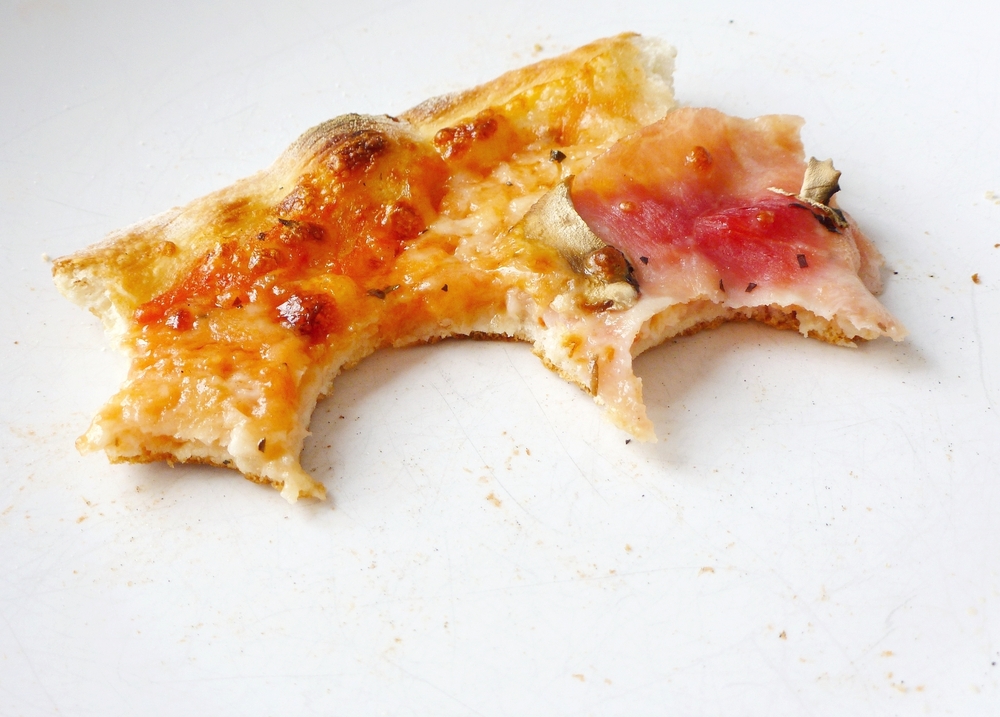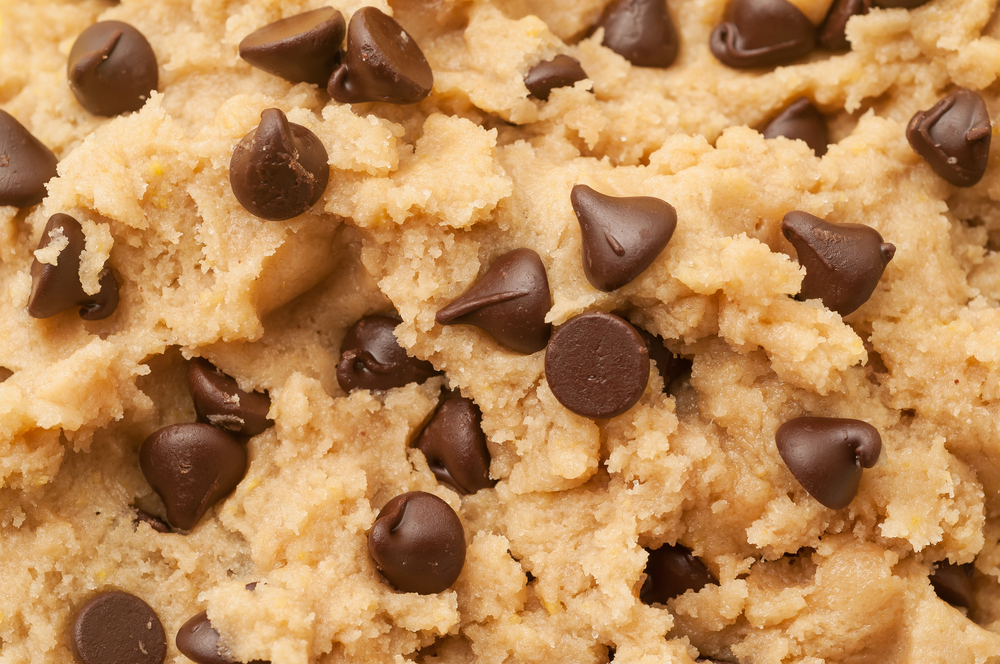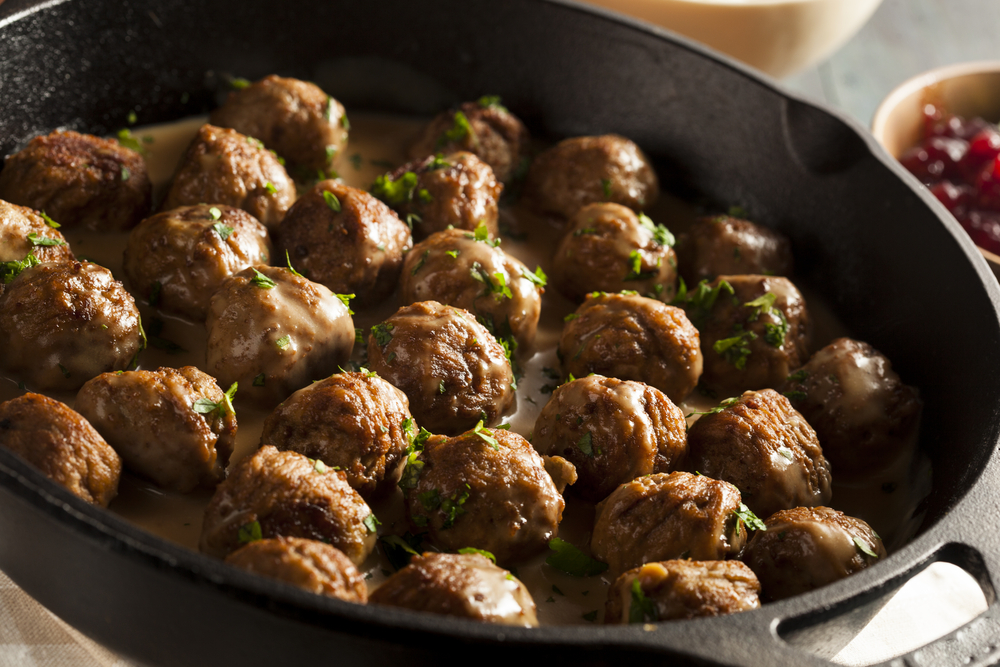Reheating frozen boiled peanuts is an easy way to enjoy this Southern delicacy any time of year. Boiled peanuts are a savory snack that is enjoyed in many Southern states, especially during sporting events or outdoor gatherings.
While boiled peanuts are best enjoyed fresh, it is possible to reheat them if you have leftovers or want to store them for later.

To reheat frozen boiled peanuts, there are a few things you need to keep in mind. First, you will need to thaw the peanuts before reheating them.
This can be done by placing the frozen peanuts in the refrigerator overnight or by running them under cold water until they are thawed.
Once the peanuts are thawed, you can choose from several reheating methods, including stovetop, microwave, and slow cooker.
Key Takeaways
- Thaw frozen boiled peanuts before reheating.
- Choose from several reheating methods, including stovetop, microwave, and slow cooker.
- Enhance the flavor of reheated boiled peanuts with spices or other seasonings.
Preparation for Reheating
https://www.youtube.com/watch?v=GcSep-szaWs
Before reheating frozen boiled peanuts, there are a few things you need to do to ensure that the peanuts are safe to eat and taste as good as possible.
In this section, I will cover the two most important steps: Thawing Frozen Boiled Peanuts and Gathering Required Materials.
Thawing Frozen Boiled Peanuts
The first step in reheating frozen boiled peanuts is to thaw them. To do this, you need to take the peanuts out of the freezer and place them in the refrigerator. It is important to thaw the peanuts slowly in the refrigerator to prevent the growth of harmful bacteria.
Depending on the amount of peanuts you have, it can take anywhere from a few hours to overnight to thaw them completely.
It is important to note that once the peanuts are thawed, you should not refreeze them. If you have more peanuts than you need, it is best to only thaw what you will use and leave the rest in the freezer.
Gathering Required Materials
Once the peanuts are thawed, you will need a few materials to reheat them.
Here is a list of the required materials:
- Saucepan or Pot: You will need a saucepan or pot to boil the peanuts.
- Water: You will need enough water to cover the peanuts.
- Salt: If desired, you can add salt to enhance the flavor of the peanuts.
- Airtight Container: If you have leftover peanuts after reheating, you will need an airtight container to store them in the refrigerator.
It is important to gather all of the required materials before starting to reheat the peanuts. This will make the process smoother and ensure that you have everything you need.
Reheating Methods
https://www.youtube.com/watch?v=cU5Ds6SGztY
When it comes to reheating frozen boiled peanuts, there are a few methods that you can use. In this section, I will go over the three most common reheating methods: microwave reheating, stovetop reheating, and using a slow cooker.
Microwave Reheating
Microwave reheating is the quickest and easiest way to reheat boiled peanuts. To do this, you will need a microwave-safe container and a lid.
Here are the steps:
- Place the boiled peanuts in a microwave-safe container.
- Add a small amount of water to the container, just enough to cover the bottom.
- Cover the container with a lid or microwave-safe plastic wrap.
- Microwave the peanuts on high for 1-2 minutes, or until they are heated through.
Be sure to stir the peanuts halfway through the reheating process to ensure that they heat evenly. Also, be careful when removing the container from the microwave, as it will be hot.
Stovetop Reheating
Stovetop reheating is another popular method for reheating boiled peanuts. To do this, you will need a saucepan or pot, a steamer basket, and some simmering water. Here are the steps:
- Fill a saucepan or pot with enough water to cover the bottom.
- Place a steamer basket in the saucepan or pot.
- Add the boiled peanuts to the steamer basket.
- Cover the saucepan or pot with a lid and simmer the peanuts for 10-15 minutes, or until they are heated through.
Be sure to check the peanuts regularly to ensure that they do not overcook. If the water evaporates, add more water to the saucepan or pot.
Using a Slow Cooker
Using a slow cooker is a great way to reheat boiled peanuts if you have a little more time on your hands. To do this, you will need a slow cooker and some water.
Here are the steps:
- Place the boiled peanuts in the slow cooker.
- Add enough water to cover the peanuts.
- Cover the slow cooker with a lid and cook on low for 2-3 hours, or until the peanuts are heated through.
Be sure to stir the peanuts occasionally to ensure that they heat evenly. Also, be careful when removing the slow cooker lid, as it will be hot.
No matter which reheating method you choose, be sure to check the temperature of the peanuts before eating them to ensure that they are heated through.
Seasoning and Flavor Enhancement
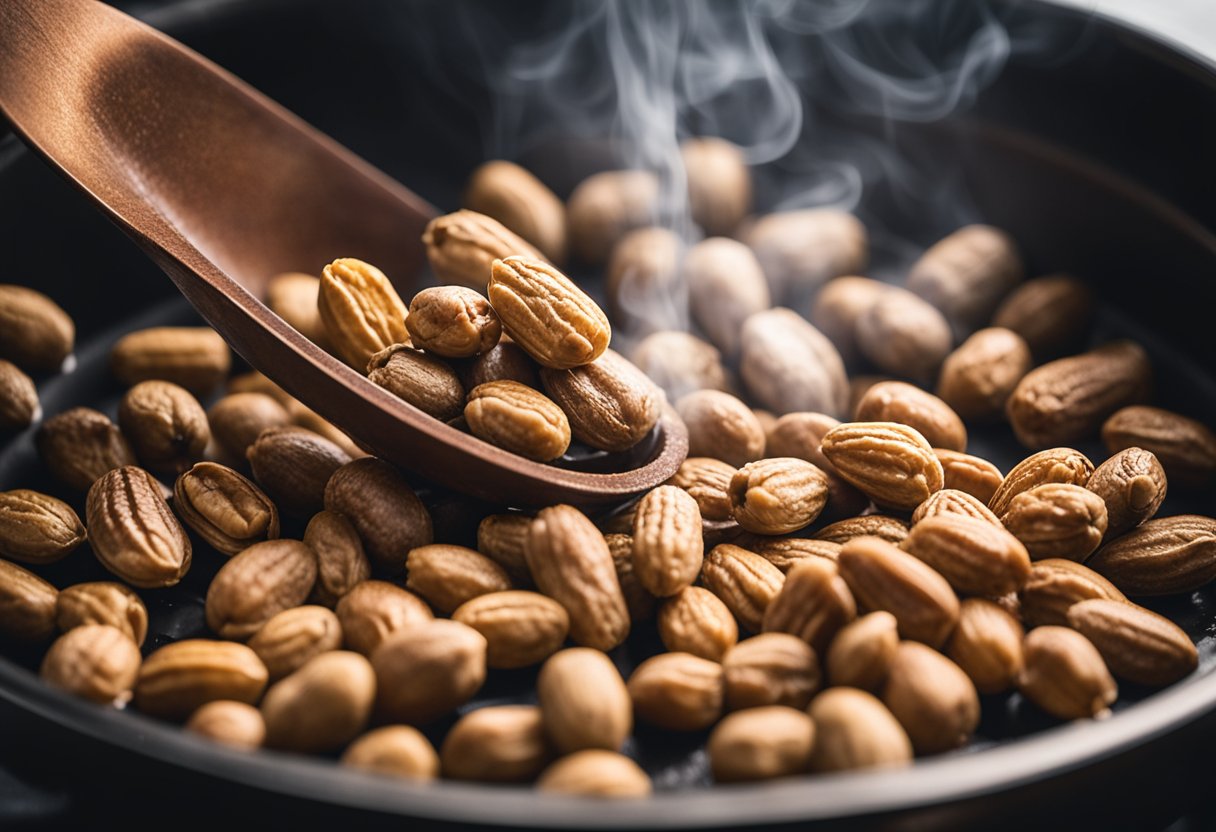
As with any food, seasoning and flavor enhancement can make a huge difference in the taste of reheated boiled peanuts. Here are a few tips to help you achieve the perfect flavor profile for your boiled peanuts.
Adding Spices and Seasonings
Adding spices and seasonings to your boiled peanuts can give them a new and exciting flavor. Some popular options include cajun seasoning, garlic powder, and chili powder.
You can also experiment with different spice blends to find the perfect combination for your taste buds.
To add spices and seasonings to your boiled peanuts, simply mix them in with the peanuts before reheating. Alternatively, you can sprinkle them on top of the peanuts after reheating for an extra burst of flavor.
Maintaining Optimal Saltiness
Salt is an important component of boiled peanuts, but it can be easy to overdo it. If your boiled peanuts are too salty, you can rinse them in cold water before reheating to remove some of the excess salt.
On the other hand, if your boiled peanuts are not salty enough, you can add salt to the water when reheating. Be sure to taste the peanuts after reheating and adjust the salt level as needed.
Another option is to use hot sauce or other salty condiments to add flavor and saltiness to your boiled peanuts. Just be sure to use these condiments sparingly, as they can quickly overpower the flavor of the peanuts.
Overall, seasoning and flavor enhancement can take your reheated boiled peanuts to the next level.
Experiment with different spices and seasonings to find the perfect combination for your taste buds, and don’t be afraid to adjust the salt level as needed.
Safety and Storage Tips
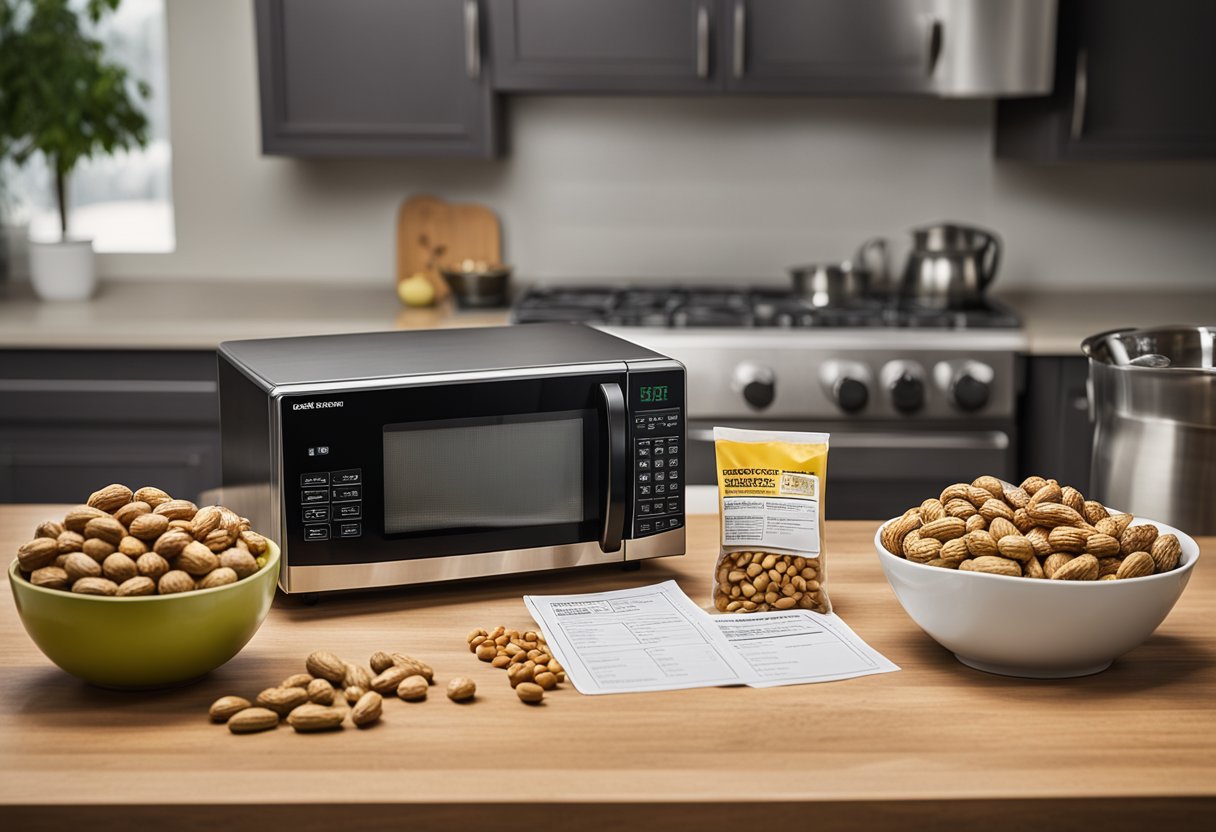
As someone who loves boiled peanuts, it’s important to know how to store them properly to avoid spoilage and foodborne illnesses.
Here are some safety and storage tips that I follow when storing boiled peanuts.
Proper Storage of Boiled Peanuts
The best way to store boiled peanuts is in an airtight container in the refrigerator. According to Foods Guy, boiled peanuts can last up to one week in the refrigerator if stored properly.
If you plan on keeping them for longer, it’s best to freeze them.
Freezing Boiled Peanuts
Freezing boiled peanuts is a great way to extend their shelf life. To freeze boiled peanuts, place them in an airtight container or freezer bag and store them in the freezer.
According to FoodandFizz, boiled peanuts can last up to six months in the freezer if stored properly. When reheating frozen boiled peanuts, it’s important to thaw them first before reheating.
Signs of Spoilage
It’s important to know when boiled peanuts have gone bad to avoid foodborne illnesses. Signs of spoilage include a sour or off smell, slimy texture, and mold growth. If you notice any of these signs, it’s best to throw them away.
By following these safety and storage tips, you can enjoy boiled peanuts without worrying about spoilage or foodborne illnesses.
Conclusion
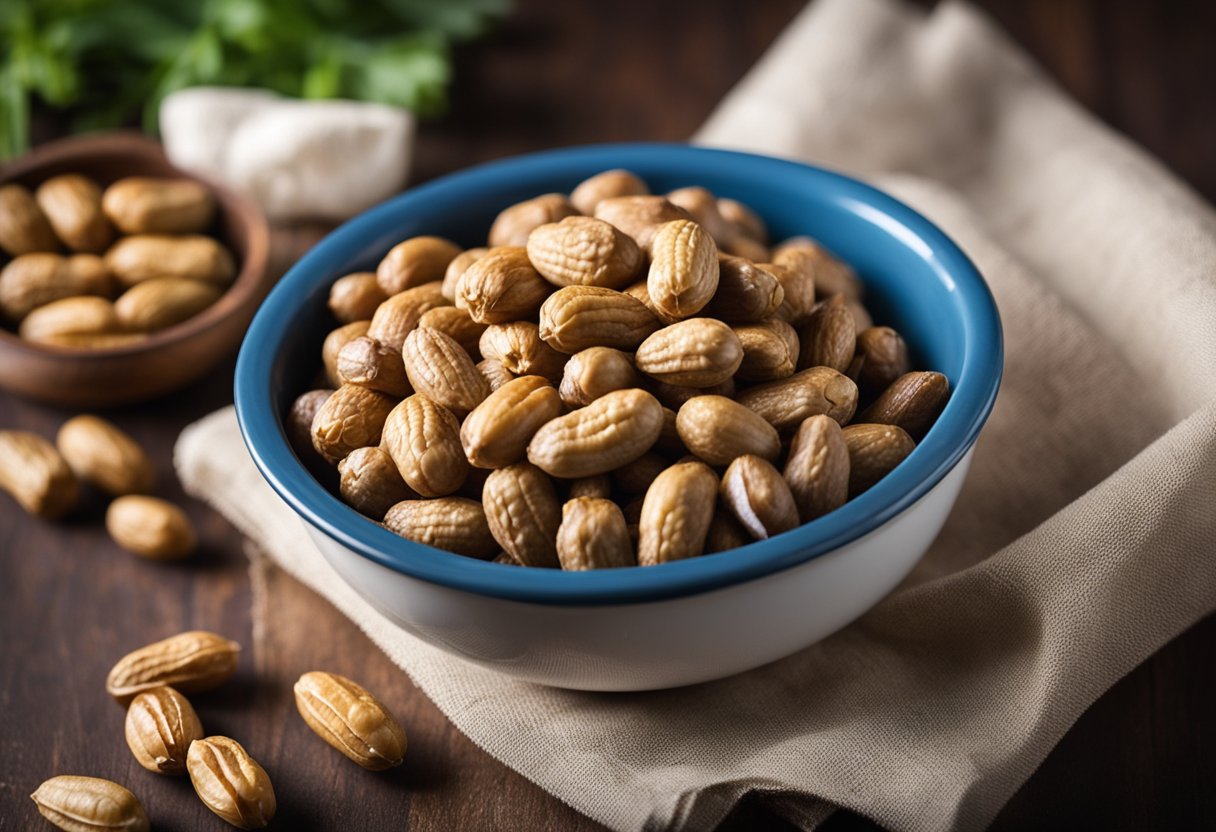
In conclusion, reheating frozen boiled peanuts can be an easy and delicious way to enjoy leftover boiled peanuts.
As a Southern delicacy, boiled peanuts are a popular snack that can be enjoyed hot or cold. When reheating boiled peanuts, it is important to use the right method to ensure that they are heated through and maintain their flavor and texture.
One of the easiest ways to reheat boiled peanuts is using the stovetop method. Simply place the peanuts in a saucepan and add enough water to cover them.
Bring the water to a boil, then reduce the heat to low and simmer the peanuts for about 10 minutes or until they are heated through. Drain the water and serve.
Another method is to use the microwave. Place the boiled peanuts in a microwave-safe dish and add a small amount of water.
Cover the dish with a lid or microwave-safe wrap and microwave on high for about 2-3 minutes or until heated through. Be careful not to overcook the peanuts, as they can become tough and chewy.
To enhance the flavor of reheated boiled peanuts, consider adding spices or other seasonings such as garlic powder, onion powder, or cajun seasoning.
You can also add a little bit of salt if desired, but be cautious as some pre-boiled nuts may already contain sufficient seasoning.
Overall, reheating boiled peanuts is a simple process that can be done using either the stovetop or microwave method. With a little bit of seasoning, reheated boiled peanuts can be a delicious snack that can be enjoyed anytime.
Frequently Asked Questions
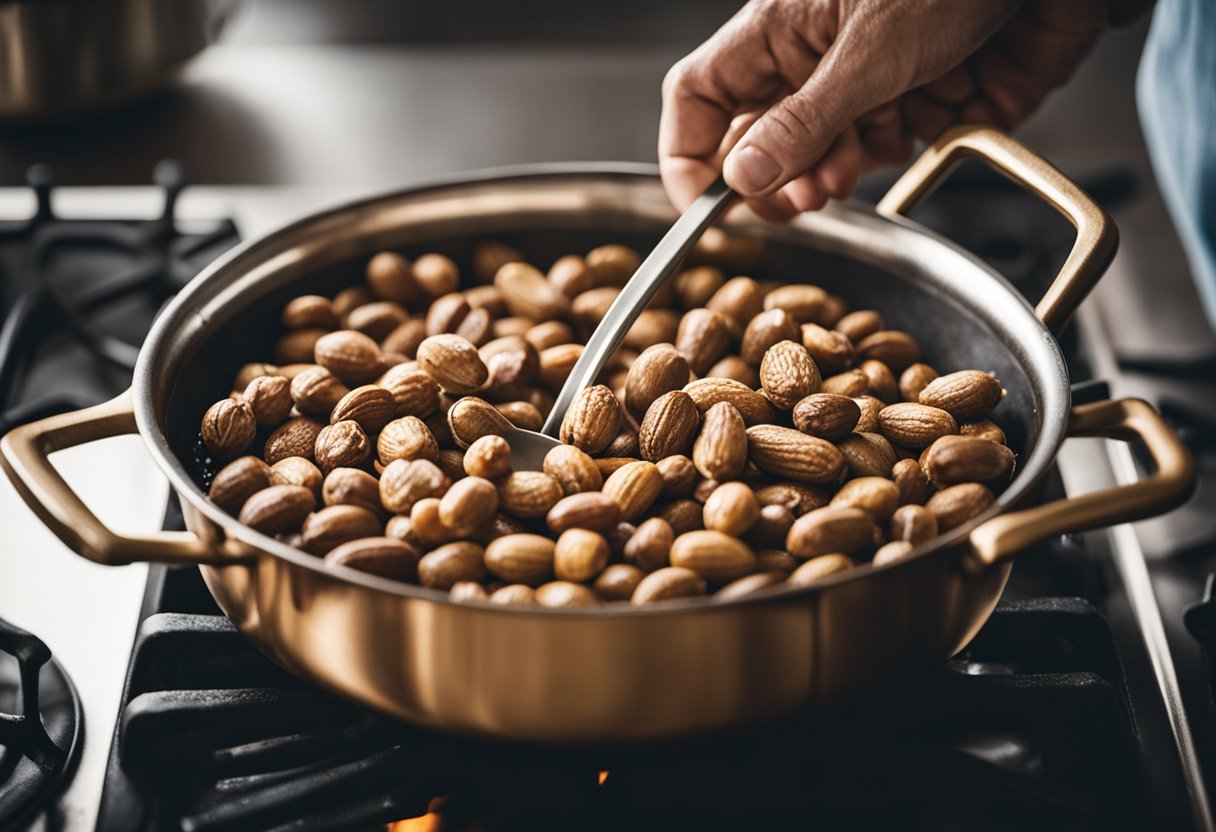
What is the best method to reheat frozen boiled peanuts?
The best method to reheat frozen boiled peanuts is to thaw them first and then reheat them on the stove or in the microwave. Thawing is important because it ensures that the peanuts are heated evenly and thoroughly.
You can thaw the peanuts in the refrigerator overnight or in cold water for a few hours. Once thawed, you can reheat them on the stove by placing them in a saucepan with enough water to cover them and simmering for about 10 minutes.
Alternatively, you can reheat them in the microwave by placing them in a microwave-safe dish with a little water and microwaving for a few minutes.
Can you microwave frozen boiled peanuts for reheating?
Yes, you can microwave frozen boiled peanuts for reheating. However, you need to be careful not to overcook them as this can make them tough and chewy.
To microwave frozen boiled peanuts, place them in a microwave-safe dish with a little water and microwave on high for a few minutes. Check them regularly and stir them occasionally to ensure even heating.
How long should you reheat frozen boiled peanuts on the stove?
You should reheat frozen boiled peanuts on the stove for about 10 minutes or until they are heated through. To do this, place them in a saucepan with enough water to cover them and simmer over low heat. Stir them occasionally to ensure even heating.
Are there any safety concerns when reheating frozen boiled peanuts?
Yes, there are some safety concerns when reheating frozen boiled peanuts. It is important to ensure that they are heated to a safe temperature of at least 165°F (74°C) to kill any bacteria that may be present.
Also, be sure to refrigerate any leftover peanuts promptly and discard them if they have been left at room temperature for more than two hours.
What is the recommended temperature for reheating frozen boiled peanuts in an oven?
The recommended temperature for reheating frozen boiled peanuts in an oven is 350°F (175°C). To do this, place them in an oven-safe dish with a little water and cover with foil. Bake for about 20 minutes or until they are heated through.
How do you ensure frozen boiled peanuts are reheated evenly?
To ensure frozen boiled peanuts are reheated evenly, it is important to thaw them first. This can be done by placing them in the refrigerator overnight or in cold water for a few hours.
Once thawed, you can reheat them on the stove or in the microwave, stirring occasionally to ensure even heating. If reheating in the oven, be sure to cover them with foil to prevent them from drying out.



